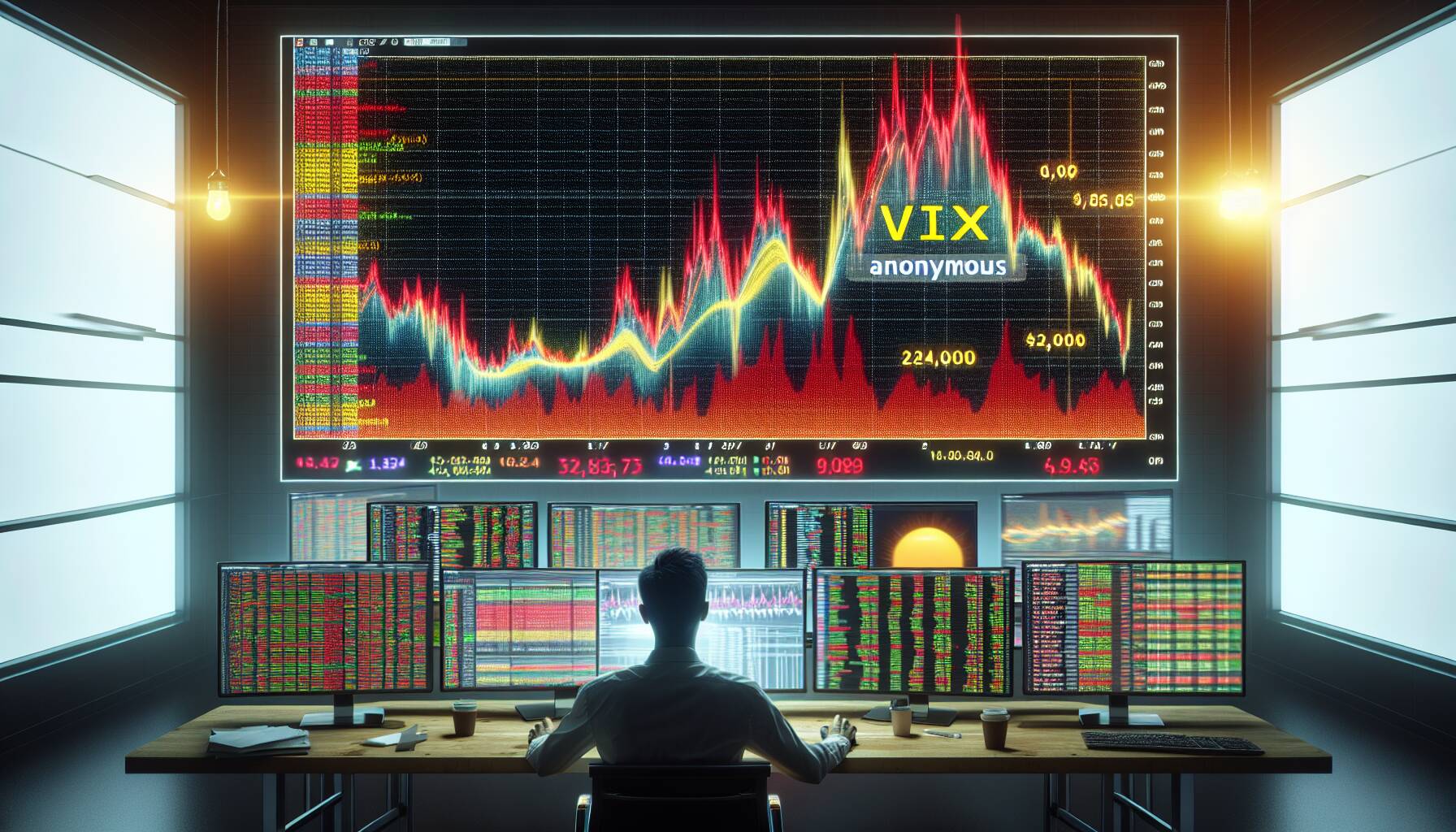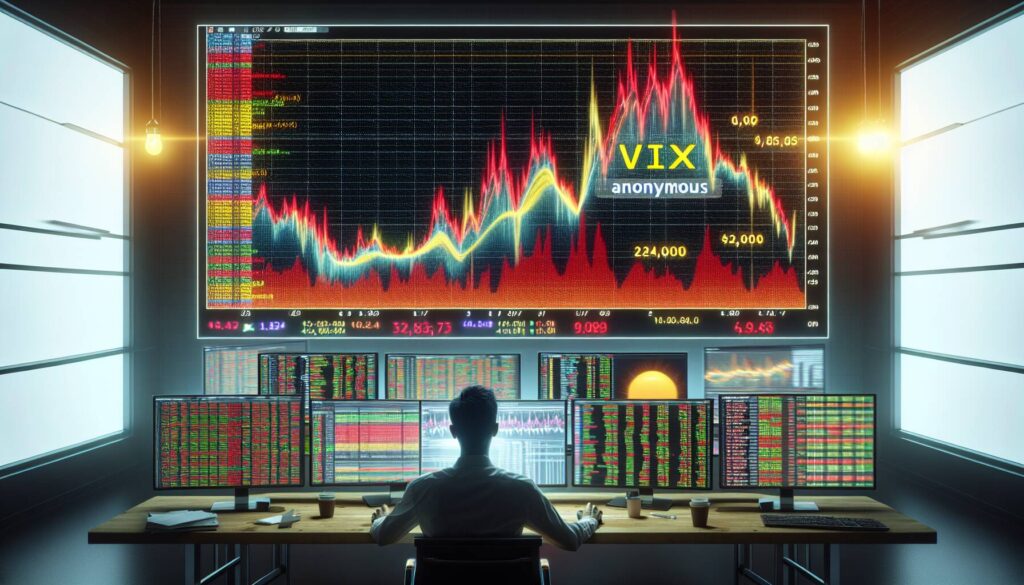The VIX index, widely regarded as Wall Street’s “fear gauge,” is making headlines as it reached a notable peak of 39, the highest level since October 2020. This surge in the VIX reflects heightened expectations for market volatility, primarily triggered by China’s recent decision to impose retaliatory tariffs on the U.S. This development has shaken investor confidence, leading to a significant sell-off in U.S. stock-index futures.
According to data from TradingView, the repercussions of this news have led traders to revise their forecasts for potential Federal Reserve interest-rate cuts, now estimating a total of 116 basis points this year, an increase from the previous 100 basis points.
Amid this tumultuous backdrop, the world’s leading cryptocurrency, Bitcoin (BTC), has also felt the ripple effects. Trading 0.7% lower at $82,500, Bitcoin briefly reached highs exceeding $84,600 earlier in the day. Increasing uncertainty has resulted in a rise in Bitcoin’s 30-day implied volatility, as indicated by Deribit’s DVOL index, which climbed to an annualized 54.6%, marking the highest point in two weeks.
The market reactions underscore how intertwined global geopolitical events are with trading behaviors, impacting not only stock indices but also the cryptocurrency landscape.

The Impact of Recent Market Developments on Volatility and Investment Decisions
Recent market fluctuations reveal important trends that could influence investors’ strategies moving forward. Here are some key points to consider:
- VIX Index Surge:
- The VIX index reached 39, the highest level since October 2020, indicating heightened market volatility.
- This spike acts as a “fear gauge,” suggesting increased investor anxiety regarding market stability.
- China’s Retaliatory Tariffs:
- China imposed new tariffs on the U.S., prompting a significant reaction in the markets.
- The geopolitical tensions may lead to further economic repercussions, affecting trade and investor confidence.
- U.S. Stock-Index Futures Sell-Off:
- A sharp drop in stock-index futures indicates traders’ concerns about the future performance of the U.S. market.
- This situation can lead to a reconsideration of investment strategies, including a potential shift towards more conservative assets.
- Interest Rate Cut Predictions:
- The estimates for Federal Reserve interest-rate cuts increased from 100 basis points to 116 basis points this year.
- Lower interest rates can impact borrowers and savers, encouraging spending but also potentially affecting investment yields.
- Bitcoin Market Movements:
- Bitcoin (BTC) experienced a minor decline, trading at $82,500 after hitting highs above $84,600.
- The cryptocurrency’s 30-day implied volatility rose to 54.6%, the highest in two weeks, reflecting significant market uncertainty.
Implications for Investors: The recent market changes may prompt a reevaluation of investment portfolios, adjustment to risk exposure, and strategizing around both traditional assets and cryptocurrencies.
The Rising VIX and Its Implications for the Markets
The recent spike in the VIX index to 39, a peak not seen since October 2020, signals a turbulent period ahead for investors. This surge, attributed to China’s retaliatory tariffs against the U.S., has caught the attention of market participants who typically monitor this “fear gauge” for signs of volatility in the equity markets. Such a pronounced increase in the VIX indicates heightened uncertainty and anxiety among traders, likely leading to a flurry of activity across financial sectors.
Competitive Advantages: This spike in volatility reflects a shift in sentiment, encouraging speculative trading strategies. Traders who thrive in volatile conditions may find opportunities not only in equities but also in derivatives, such as options on the VIX itself. Moreover, as estimates for Federal Reserve interest-rate cuts rise from 100 to 116 basis points, there may be an influx of capital directed toward safer assets or those that typically perform well during periods of economic uncertainty. Hedge funds and institutional investors may leverage this volatility for profit, aligning short positions or utilizing options expansion.
Disadvantages: However, this turbulence can also create significant challenges for investors who prefer stability. Retail investors, particularly those with conservative portfolios, may see their assets fluctuating more than they are comfortable with. The increase in volatility could lead to a panicked sell-off, further exacerbating market descents and potentially resulting in steep losses. Additionally, the agitation in the Bitcoin market, with its price dipping 0.7% and 30-day implied volatility rising sharply, indicates that even cryptocurrency investors are feeling the ripple effects of broader market upheavals.
This situation poses a dilemma: while day traders and risk-takers may benefit from these shifts, more traditional investors could face major setbacks. Businesses reliant on stable economic forecasts may also find their planning hampered as fluctuating interest rates complicate financing strategies. So, in the heart of this turbulence lies a dual-edged sword, marking a time of both opportunity and risk—a challenging paradox for many market participants.

















